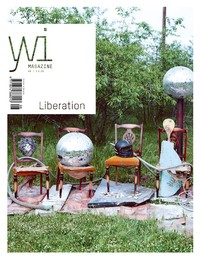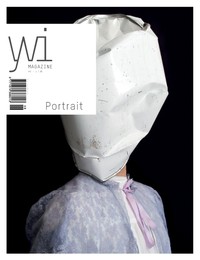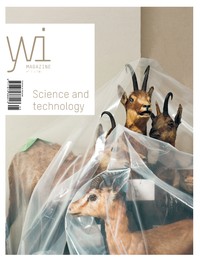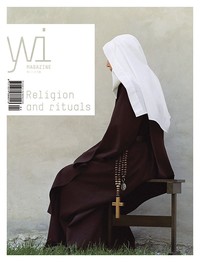Yvi Magazine i — #7
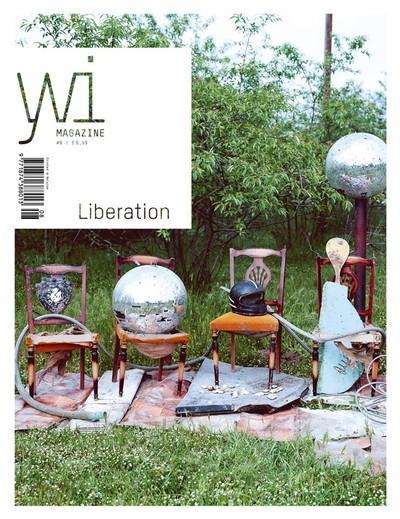
Yvi Magazine
Yvi Magazine is an English-language art magazine published in the Netherlands. Each issue of Yvi Magazine focuses on a central (social) theme seen from the perspective of art. A wide range of artistic visions on a pertinent social theme are brought together in the form of photography, design, architecture and visual art.
- 435 (128)
- Netherlands
- Yearly
- Art, Culture, Design, Photography & Video
- First issue 2007
- ISSN 1874-3889
“#7: Confrontation”
EUR 12.50
Confrontation! It exposes, it is usually violent and it brings everything up sharp. Confrontation exposes differences, forces us to make choices, makes clear what norms and values are central and what it is really all about.
Confrontation comes in many forms. In this seventh issue of Yvi Magazine, there are three principal themes: confrontation with yourself, confrontation with another and confrontation with the way things are done.
For many, their own body is a source of confrontation, in terms of health and in terms of beauty.
In XXL, Dóra Pelczer reveals the battle with her own weight, the struggle to meet society’s ideal and the social pressure when this ideal is not achieved.
Cara Phillips has portrayed the places where perfection can be realized by way of medical interventions: the spaces where plastic surgeons work.
Shirin Fakhim’s Tehran Prostitutes, sculptures made of everyday objects and articles of clothing, employ absurd and sympathetic humour to broach the problems surrounding Persian prostitution.
Few experiences are likely to affect us as deeply as the confrontation with death. Yet most deaths are almost secretive, far removed from our everyday lives. The confrontations with death and dying are perhaps our last taboos. In his impressive series, Life Before Death, Walter Schels portrays people shortly before the end of their lives and just after their deaths.
Tristan Cai’s Physical Realities of Death series unfolds the life story of Toivo Laukkanen, with such themes as the value of life, the role of masculinity and death passing review.
In Images of Happy People, Simon Menner presents photographs released by police, of potential victims of the convicted rapist and serial killer, Rodney James Alcala. They are cheerful young people, whom Alcala had studied and photographed with the most gruesome of intentions.
Confrontation with intimidation and violence is the dominant tone in the work of Johannes Kahrs. By using images from our collective visual memories, it almost immediately evokes a familiar and uncomfortable feeling.
In Tunesia, demonstrators successfully overthrew the 23-year autocratic regime of Ben Ali, with the demonstrators themselves taking the first photographs of the revolution and distributing them through the social media. Olivier Coulange uses these social channels to rephotograph the images, giving both a direct view of the rebellion and raising questions about the role of the photographer as author in the information exchange process.
For a year, Teresa Margolles collected the Mexican daily newspaper, PM, every edition crammed with violence and sensationalism, with manslaughter, homicide and scantily clad models adorning its front pages.
The work of the Pakistani artist Imran Qureshi brings together two extremes: clear traces of death, violence and suffering, with extremely concentrated, microscopically detailed and tranquil miniatures.
Mari Bastashevski investigates kidnapping as a strategy in conflict, first applied on a major scale during the second Russian-Chechen war. Since then, it has grown to become a frequently applied tactic. Bastahevski tells the stories of the abductions and portrays the homes left behind by those who are missing.
Adam Broomberg and Olivier Chanarin completed a project with and on the remarkable 1955 publication, War Primer, by Bertolt Brecht. War Primer 2 is the belated sequel. While Brecht’s War Primer was concerned with images of the Second World War, War Primer 2 focuses on the images of conflict generated by both sides of the so-called ‘War on Terror’.
Peter Granser set out in search of traces of a landscape surrounding the village Gruorn, in the Swabian Alps, whose inhabitants were forcibly relocated in 1939. He documents the diverse history of an area that was used as a military training ground for over a century and declared a biosphere reserve in 2005.
In exceptional circumstances, everything can change or disappear in an instant. The tsunami of 11 March 2011 wiped away a large section of the coast of Japan. When the cleanup of the devastation began, millions of private photographs and family albums were found. A group of young researchers devoted themselves to cleaning, drying and digitizing these photographs, in order to make them available to their owners, so that they could once again built up a bit of their own history and identities, along with their lives. The photographs, which together form an ideal family photo album, are a symbol of the deep connection between personal and collective memory.
The economic crisis dealt heavy blows in many sectors, including the auto industry. As part of his trilogy, The Great Recession, Kirk Crippens portrayed the empty, cold remains of what were once bustling centres of activity: abandoned showrooms, empty offices, ghostly desolate spaces.
The Chaology series, by Tess Hurrell, evolved out of her fascination for the visual power of the photographed explosion. Her source material includes images of Hiroshima, nuclear testing, the space shuttle disaster, burning oil and white phosphorus bombs.
What do you think of this issue?
Sign up or Log in to join the discussion.
Recent activity
- 12 Mar, 2014 Wanted by cyanchap
- 09 Feb, 2014 Wanted by TanekeyaWord
- 10 Nov, 2013 Bought from the Magpile Store by Bolawoe
- 10 Nov, 2013 Wanted by Bolawoe
- 22 Oct, 2013 New cover uploaded by jschiphorst
- 22 Oct, 2013 Added to Magpile by jschiphorst

